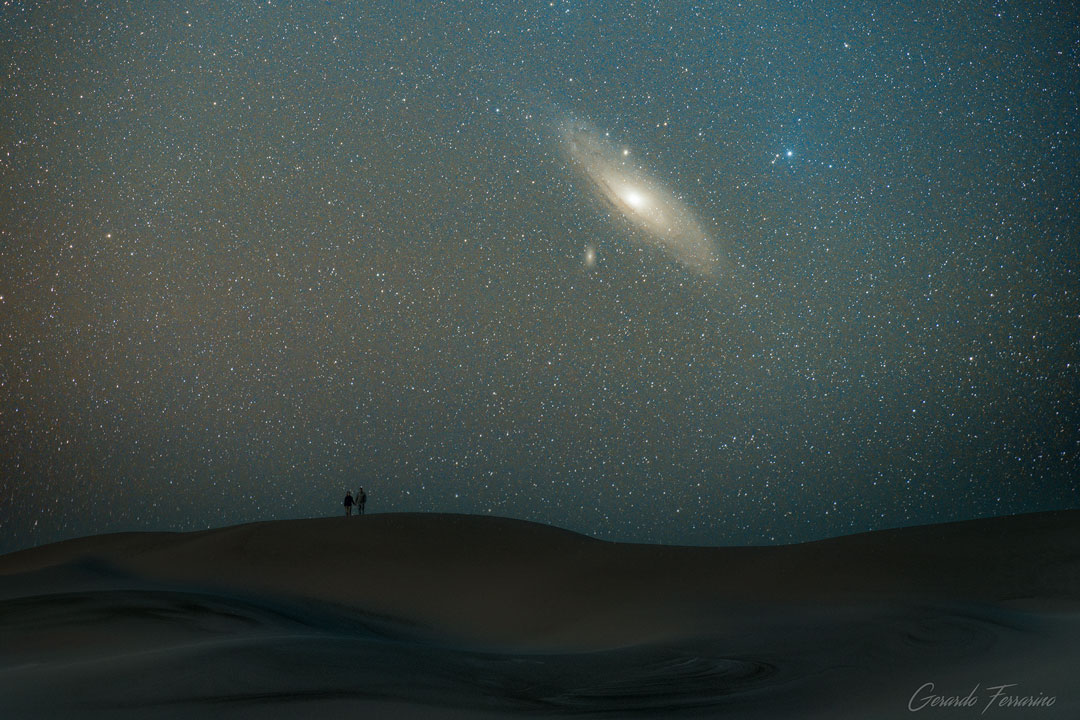2020年11月25日
Andromeda over Patagonia
Image Credit & Copyright: Gerardo Ferrarino
Explanation: How far can you see? The Andromeda Galaxy at 2.5 million light years away is the most distant object easily seen with your unaided eye. Most other apparent denizens of the night sky — stars, clusters, and nebulae — typically range from a few hundred to a few thousand light-years away and lie well within our own Milky Way Galaxy. Given its distance, light from Andromeda is likely also the oldest light that you can see. Also known as M31, the Andromeda Galaxy dominates the center of the featured zoomed image, taken from the dunes of Bahía Creek, Patagonia, in southern Argentina. The image is a combination of 45 background images with one foreground image — all taken with the same camera and from the same location within 90 minutes. M110, a satellite galaxy of Andromenda is visible just below and to the left of M31’s core. As cool as it may be to see this neighboring galaxy to our Milky Way with your own eyes, long duration camera exposures can pick up many faint and breathtaking details. Recent data indicates that our Milky Way Galaxy will collide and combine with the similarly-sized Andromeda galaxy in a few billion years.
Tomorrow’s picture: open space
巴塔哥尼亚上空的仙女星系
影像提供与版权: Gerardo Ferrarino
说明: 你能看多远? 2百50万光年远的仙女星系,是肉眼轻易可见的最遥远天体。其他夜空中可见的天体,诸如恒星、星团和星云,距离通常介于数百到数千光年之间,而且近在我们银河系之内。以距离来论,仙女星系的晕光可能也是你能见到最古老的星光。在这幅摄于阿根廷南部.巴塔哥尼亚·巴伊亚溪沙丘的主题影像里,亦名为M31的仙女星系,是中心处的特写天体。这幅影像组合了在90分钟期间,使用同部相机摄于同一地点的45张背景照片和1幅前景照片。其中,仙女星系的伴星系 M110,位在M31核心的左下方。能以肉眼见到我们银河系的近邻或许很酷,不过长曝光影相机影像,更能呈现许多暗淡却令人屏息的细节。近来的观测数据指出,我们的银河系和仙女星系在数十亿年里,将会撞在一起并合而为一。
明日的图片: open space


